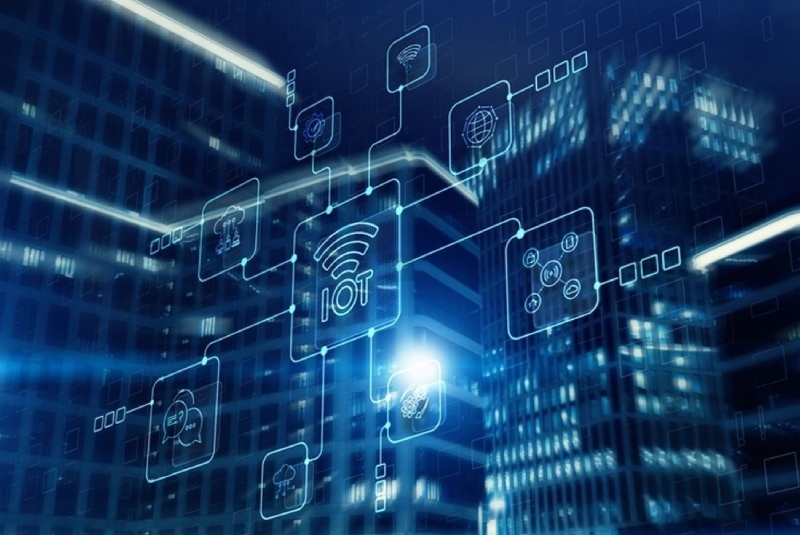
The Internet of Things (IoT) is revolutionizing the cleaning industry by improving operational efficiency, transparency, and data-driven decision-making. With interconnected devices and smart systems, cleaning service providers are increasingly able to automate tasks, optimize resources, and deliver consistent service quality. However, implementing IoT solutions in the cleaning sector comes with challenges that must be addressed to realize its full potential.
What are the challenges in the cleaning industry?
The cleaning industry is labor-intensive, with multiple teams operating across various sites and shifts. Managing workforce productivity, ensuring service consistency, meeting hygiene standards, and responding to real-time needs are persistent challenges. Additionally, documentation, reporting, and compliance with health regulations require time- consuming manual processes, which are prone to errors and delays.
consuming manual processes, which are prone to errors and delays.
Rising customer expectations and labor shortages and rising labor costs further complicate daily operations. Facility managers often face pressure to do more with less—reduce costs, ensure accountability, and maintain high-quality outcomes. This environment sets the stage for IoT to offer significant improvements.
Here some Core Problem Areas
The key pain points in the cleaning industry include:
- Lack of Real-Time Visibility:
Managers often don’t know what’s happening on-site until the task is completed or an issue arises. - Manual Reporting:
Cleaning logs, inspection results, and inventory tracking are often still handled on paper. - Resource Wastage:
Without data, supplies like water, cleaning agents, or paper products may be overused or understocked.
- Inconsistent Service Quality:
It is difficult to ensure uniform performance across different staff and shifts.
- Limited Accountability:
Without monitoring systems, it’s hard to verify if cleaning tasks are completed correctly and on time.
IoT - One central platform for everything
IoT streamlines operations by integrating sensors, mobile devices, and data analytics into a single, centralized platform. This platform can monitor occupancy levels, track cleaning performance, manage assets, and schedule tasks dynamically. Real-time dashboards provide actionable insights for supervisors and cleaning teams, allowing for better communication and faster response times.
For example, smart dispensers can track usage of soap and paper towels, while floor sensors can indicate when a high-traffic area needs attention. All this information is collected and visualized in one place, eliminating silos and simplifying decision-making.
Open interfaces are important
An IoT solution’s success depends heavily on interoperability—the ability of various systems and devices to communicate with each other. Open interfaces and APIs (Application Programming Interfaces) allow companies to integrate existing cleaning equipment, workforce management software, and sensor technologies into one unified ecosystem.
This flexibility is essential in an industry with a wide variety of tools and systems. Whether integrating automated floor scrubbers, digital checklists, or smart lockers, open interfaces ensure scalability and customization for each facility’s needs.
Real world examples
Smart Washroom Monitoring:
In large airports and malls, sensors in washrooms monitor foot traffic, alert staff when supplies are low, and track cleaning frequency. This ensures clean facilities without over-deployment of staff.
Connected Cleaning Machines:
Robotic scrubbers and vacuums send data on run times, cleaning coverage, and maintenance needs to a central system. This reduces downtime and ensures that equipment is used efficiently.
Predictive Maintenance:
Sensors in HVAC or floor-care machines alert supervisors when maintenance is due, preventing costly breakdowns and extending equipment lifespan.
Energy and Chemical Management:
IoT-enabled dispensers track chemical usage to avoid overuse and waste, aligning with sustainability goals and cost savings.
Epilogue
IoT is transforming the cleaning industry by addressing longstanding operational inefficiencies and offering real-time, data-driven solutions. While implementation comes with initial costs and training needs, the long-term benefits—such as improved service quality, optimized resource use, and increased transparency—are compelling.
With one central platform powered by open interfaces and adaptable to real-world scenarios, IoT creates a cleaner, safer, and more responsive environment for facilities and their users. As demand for efficiency and accountability rises, the adoption of IoT in cleaning is no longer optional—it is essential for staying competitive.

.jpg)
.jpg)
 Search
Search.jpg)
